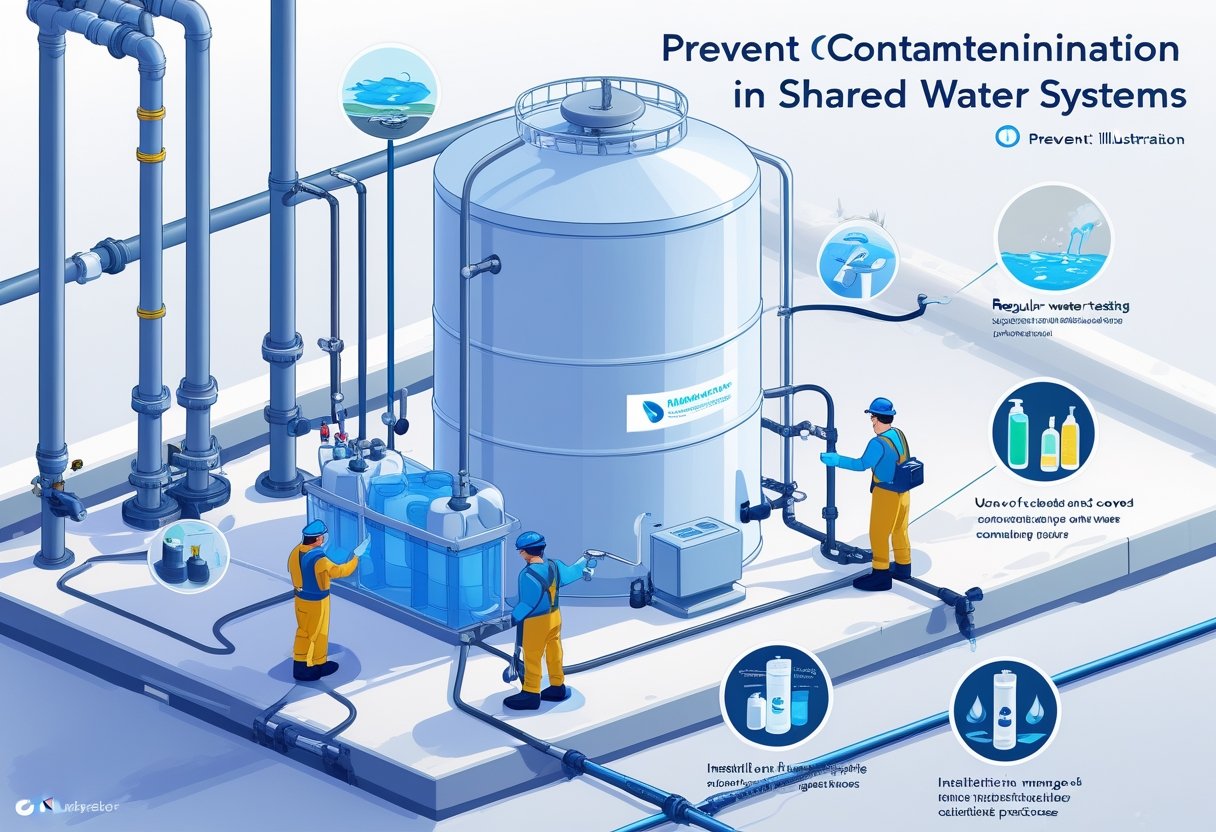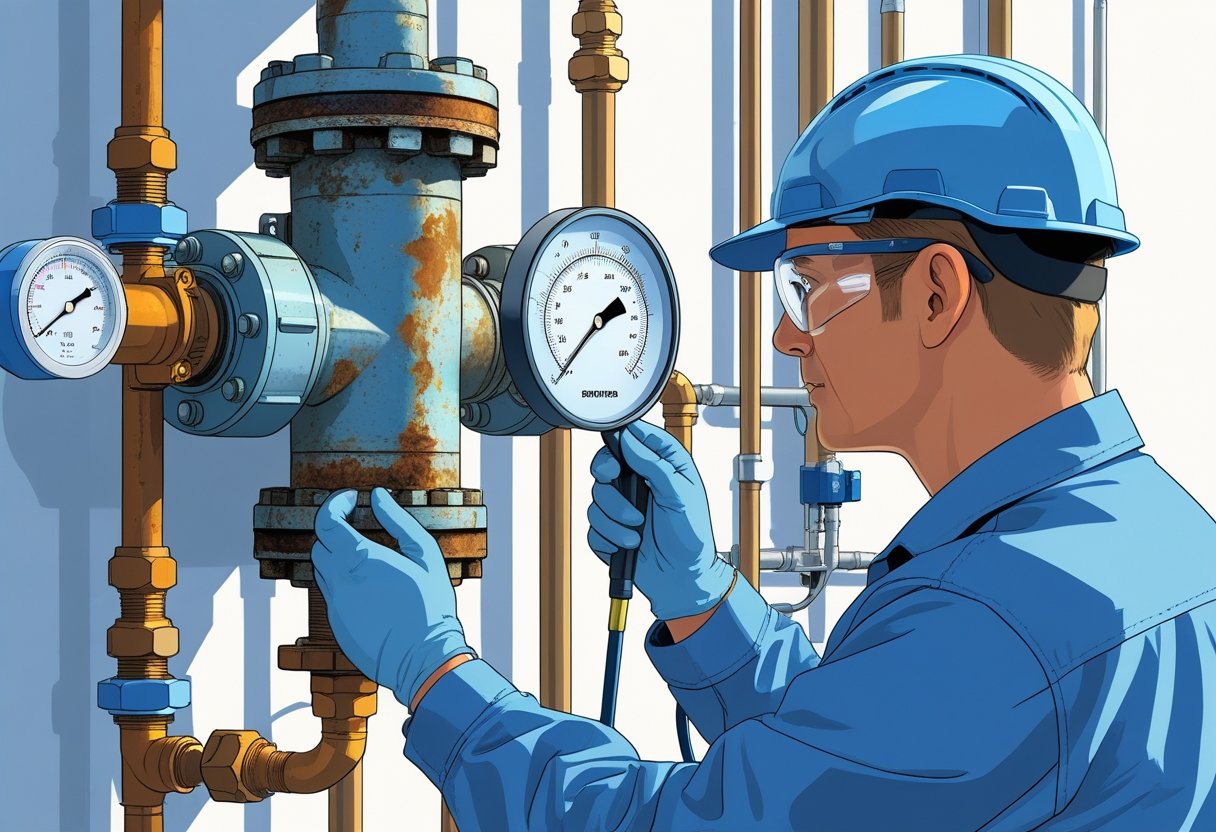Backflow installation is one of the most important steps to ensure your home or business water supply stays clean and uncontaminated. It’s especially important for properties with irrigation systems, hose bibbs, or other plumbing setups where water could potentially reverse direction and carry pollutants into your drinking water.
The cost for installing a backflow preventer typically ranges from $300 to $1,000, depending on the type of device, installation location, and whether the work is done by a licensed plumber. While it may be tempting to try a DIY approach, backflow devices must be installed according to local codes and tested after installation to ensure they work correctly, this makes professional help a smart choice for most property owners.
In this article, we’ll walk through what backflow installation includes, when and where it’s needed, and how it protects your plumbing system from serious problems down the line.
Here's what you'll learn:
- Understanding backflow prevention
- Installation guidelines
- Mechanical components and functions
- Maintenance and testing
Lets dive in!
Understanding backflow prevention
Backflow prevention is key to keeping our water supply safe. It stops dirty water from flowing backward into clean water pipes.
In fact, the U.S. EPA has recorded over 10,000 documented backflow contamination incidents in the United States, many of which were caused by unprotected or faulty cross-connections. This highlights the importance of proper backflow installation and maintenance to prevent similar risks in residential and commercial plumbing systems.
Let's consider how these systems work and the different types available.
Principles of backflow prevention
Backflow occurs when water flows in the wrong direction, and it can be caused by changes in water pressure. A drop in pressure in the main supply can cause back-siphonage, which pulls water from homes or businesses back into the municipal water supply.
Backflow preventers are devices that stop reverse flow. They use check valves that only allow water to move in one direction. When the flow tries to reverse, these valves close, keeping contaminated water out of the clean water supply.
Types of backflow preventers
There are several types of backflow preventers. Each works best for different situations.
Reduced Pressure Zone (RPZ) Devices: These are the most complex and reliable. They have two check valves and a relief valve.
Double Check Valve Assemblies: These use two spring-loaded check valves. They're simpler than RPZs but still very effective.
Pressure Vacuum Breakers: These are often used for irrigation systems. They prevent back-siphonage but not back-pressure.
- Atmospheric Vacuum Breakers: These are the simplest type. They're suitable for low-hazard situations.
The choice of preventer depends on the risk level and local codes. High-risk areas like hospitals often need RPZ devices, while homes might use more straightforward outdoor faucets or sprinkler systems.
Installation guidelines
Proper installation of backflow preventers is crucial for protecting water supplies. We'll cover key guidelines to ensure a safe and effective setup.
Compliance with plumbing codes
Backflow preventer installation must follow local plumbing codes, so check with the city or county building department for specific requirements. Plumbing codes vary by area, so it's essential to review current regulations. Some codes require yearly testing of backflow preventers.
Common rules include:
- Using approved device types
- Installing inaccessible locations
- Maintaining proper clearances
Installation process described
The installation process involves several key steps:
- Turn off the main water supply
- Cut the existing pipe at the installation location
- Clean and prepare pipe ends
- Apply pipe thread sealant to fittings
- Install shut-off valves on both sides
- Connect the backflow preventer
- Secure all connections tightly
- Slowly turn the water back on and check for leaks
You’ll need the right tools, including pipe cutters, wrenches, and a level, and align the device properly with the direction of water flow.
Height and location requirements
Backflow preventers need specific placement for best performance:
- Install at least 12 inches above ground or floor level
- Allow enough space for testing and repairs
- Keep away from flooding areas
- Ensure easy access to maintenance
Install a protective enclosure for outdoor installations, as this shields the device from weather and damage.
Necessary permits and inspections
Most areas require permits for backflow preventer installation, and steps typically include:
- Apply to the local water authority
- Pay any required fees
- Schedule a pre-installation inspection
- Install the device
- Have a final inspection done
After approval, yearly testing is often mandatory, so keep records of all inspections and tests for your files.
Mechanical components and functions
Backflow preventers use several key mechanical parts to stop contaminated water from entering clean water supplies. These components work together to control water flow and maintain pressure in the system.
Understanding check valves
Check valves are crucial parts of backflow preventers and only allow water to flow in one direction. When water pressure drops, the valve closes to stop reverse flow. Most backflow devices have two check valves for added safety.
Check valves come in different types:
- Swing check valves
- Spring-loaded check valves
- Disc check valves
Install check valves based on the specific plumbing setup and local codes, and conduct regular testing to ensure they work properly to prevent backflow.
Vacuum breakers and relief valves
Vacuum breakers and relief valves provide extra protection against backflow. Vacuum breakers let air into pipes to stop suction that could pull contaminated water back, and relief valves release excess pressure to avoid damage.
Standard vacuum breakers include:
- Atmospheric vacuum breakers
- Pressure vacuum breakers
Place these devices at key points in the system. Use pressure vacuum breakers for outdoor systems, as they can handle constant pressure and are less likely to freeze.
Relief valves open when pressure gets too high, protecting pipes and other components from bursting. Based on the system's needs, you should set relief valves to open at specific pressure levels.
Maintenance and testing
Backflow preventers need regular upkeep to work correctly, and you need to know how to keep these devices in top shape and ensure they pass the required tests.
Regular inspections and cleaning
Check backflow preventers often, looking for leaks, cracks, or corrosion on the device and nearby pipes. Cleaning off dirt and debris that can build up over time helps the device work better and last longer.
Inspect irrigation systems before the watering season starts, ensuring all parts move freely and aren't stuck. Check more often on commercial properties, as some localities have rules about how often to inspect.
Conducting annual testing
Have a certified tester test backflow preventers every year to ensure they work. They’ll use special tools to check if the device keeps dirty water out of clean water while checking different parts of the device, including:
- Relief valve
- Check valves
- Shut-off valves
Record the test results, and if the device fails, fix or replace it quickly. For bigger buildings or places that use large amounts of water, aim to test it more than once a year and always follow local rules.
Conclusion
Ensuring proper installation and upkeep of backflow prevention systems helps protect the water supply and keep the public safe.
By following clear installation steps, understanding the key mechanical parts involved, and keeping up with regular maintenance and testing, you help prevent contaminants from entering clean water lines. Taking care of backflow systems also keeps you in line with local regulations and supports the health of your home or community.
A proactive approach to plumbing safety helps avoid problems down the line and protects our water for years to come.
Get in touch to arrange a professional testing of your building’s backflow preventer.











